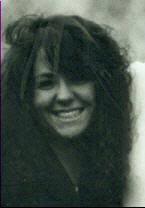The wheels....
The excitement.....
The treats......
March 28, 2014
Britt's new car, complete with new tires, gassed up and ready to head south. Complete with treats for the navigator! LoL!!!!
Weather heading down was cold and windy...
Just before we headed up the canyon by Spanish Fork, out of the darkness huge wind turbines appeared. They were almost break~taking the way they were suddenly on top of you. Learned later that they are part of the Spanish Fork Wind Farm.
We arrived in Monticello, Utah at around 2:00am and crashed for several hours.....
March 29, 2014 - Mesa Verde National Park
Mesa Verde National Park (Spanish for green tableland) was established to preserve archaeological sites built by the Ancestral Puebloans who inhabited Mesa Verde for more than 700 years (550 A.D. to 1300 A.D.). Currently Mesa Verde has over 4,700 archaeological sites including 600 cliff dwellings and the mesa top sites of pithouses, pueblos, masonry towers, and farming structure, with many more yet to be discovered. These sites are some of the most notable and best preserved ruins in the United States. For the first six centuries, they primarily lived on the mesa tops. It was not until the final 75 to 100 years that they constructed and lived in the cliff dwellings for which Mesa Verde is best known.
Visitor Center and Museum....
First stop: Spruce Tree House (The third largest and best preserved cliff dwelling in Mesa Verde National Park)
Spruce Tree House was first systematically excavated in 1908 by Dr. Jesse Walter Fewkes. Early explorers named it for the towering Douglas-fir trees (historically referred to as spruce trees) found in the canyon bottom below the alcove.
Britt blowing a kiss just outside the Spruce Tree House Museum.....she's even got her eyes closed..LOLOLOL!!!!!
Notice the heavy layer of dark soot on the alcove ceiling deposited centuries ago by small fires that the people built for cooking, light and warmth. This is a kiva courtyard. Kivas and courtyards were important places in the villages, and almost always occur together. The courtyards were for every day gatherings, work and socializing. The kivas were the gathering places for religious observances, social activities and perhaps living spaces.
The next alcove and kiva over shows a three-story section with doorways leading into living and storage rooms. These openings may look like windows, but they are one of the two common types of doorways at Mesa Verde. Some are rectangular in shape and some are T-shaped. Across the front of this three-story section, the people constructed a series of single-story rooms which have collapsed. When the rooms were intact, it would have been easy to enter the second story doorways from the rooftops.......
.....and a short ladder would have led to a third story balcony. Notice the beams that once supported the balcony extending out below the third story doorways?
Behind the third kiva below is a large open space at the back of the alcove. During the time of excavation, it was thought that this area was used for refuse disposal, based on the large variety of items found that included turkey bones, potsherds, corn cobs and husks, yucca and feather cord, worked wood, and bird droppings. Present-day Pueblo elders have suggested that the open space was used as a dance plaza at some point in the past. It's use may have changed over time. It could've also been used as storage.
We were able to enter the next kiva, as you can see Brittany doing below.
This is an unroofed kiva....
Six upright masonry pilasters, built upon a bench called a banquette, support the roof beams. In the center of the floor is a fire pit (lower left bottom of picture, mostly hidden), the small circular hole (upper right of the fire pit) is called a sipapu (a symbolic entrance into a former world). The small rectangular openings in the walls are niches, likely used for storing objects.
In the picture below the firepit shows up better, including the stone deflector, and the ventilator opening in the wall.
Rooms behind this unroofed kiva....
More rooms behind the unroofed kiva....
In the front corner of this kiva and courtyard there are three grinding bins where Pueblo women knelt to grind corn and seeds.
Spruce Tree House is considered the best preserved cliff dwelling with many intact walls and roofs, wooden beams, and plastered walls.
A quick picture of me and Britt....
More pictures of Spruce Tree House...
Subscribe to:
Post Comments (Atom)


































No comments:
Post a Comment